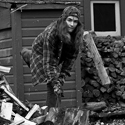
If selling the syrup, be certain to indicate that you have the other syrups in the blend for legal reasons. If just doing it for family and friends that may not be an issue. In New York state, maple syrup is specifically stated as being made by removing water from the sap of the maple tree. Inspectors get very literal on descriptions.
Dave Klish, I recently ordered a 2x6 wood fired evaporator from A&A Sheet Metal which I will be converting to oil fired
Now have solar, 2x6 finish pan, 5 bank 7x7 filter press, large water jacketed bottler, and tankless water heater.
Recently bought another Gingerich RO, this one was a 125, but a second membrane was added thus is a 250, like I had.
After running a 2x3, a 2x6, 3x8 tapping from 79 taps up to 1320 all woodfired, now I'm going to a 2x6 oil fired and a 200-425 taps.













 Reply With Quote
Reply With Quote





